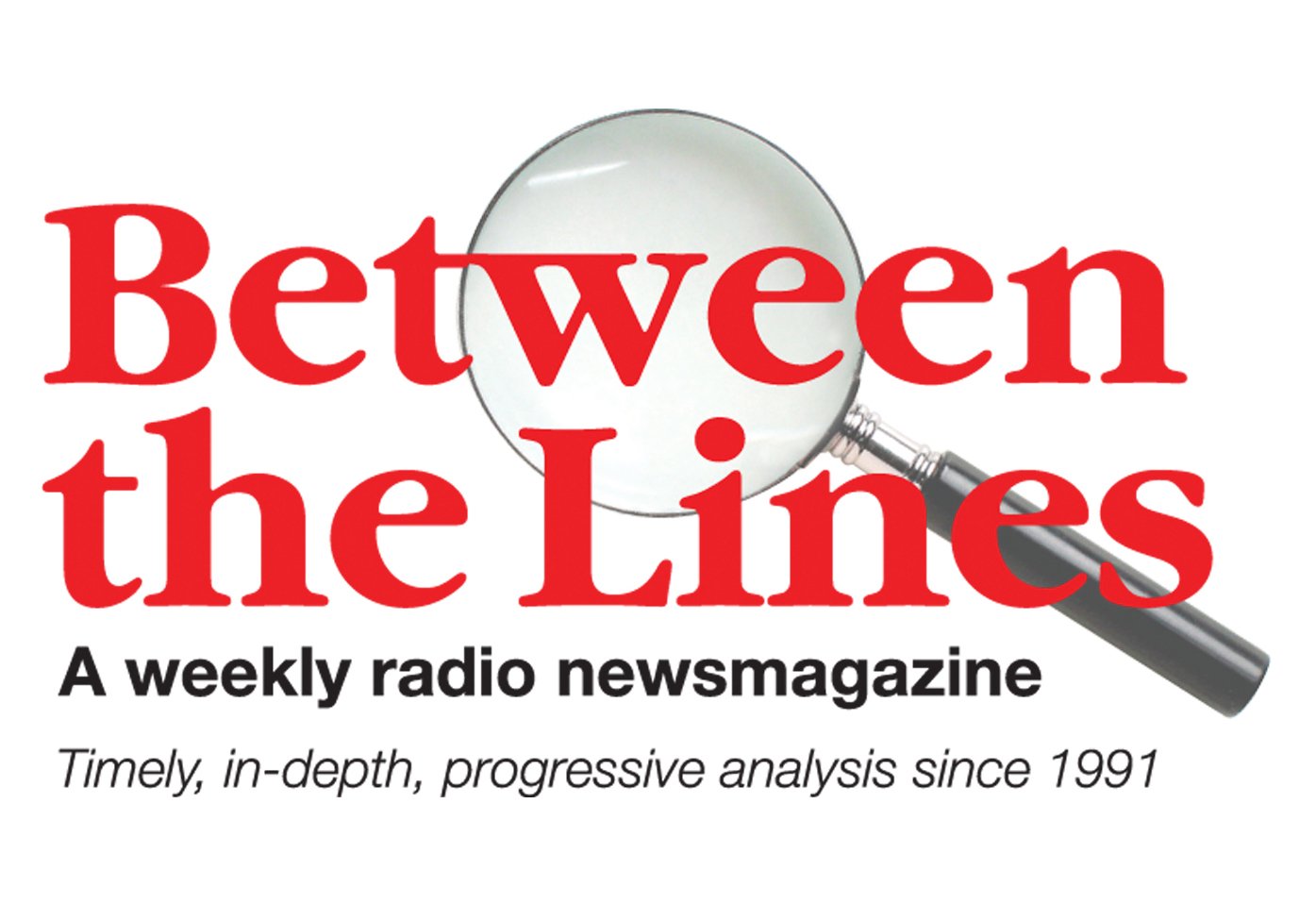Humanitarian Crisis Continues in Syria’s Eastern Ghouta Region
Interview with Noah Bonsey, senior analyst on Syria with the International Crisis Group, conducted by Scott Harris
Since 2013, 400,000 civilians living in the eastern Ghouta region on the outskirts of Syria’s capital city Damascus have been caught in a crossfire between rebel forces and the Syrian military. After an intense government assault on the area began in mid-February, the United Nations Security Council unsuccessfully attempted to broker a cease-fire to deliver desperately needed food aid and medical supplies to the civilian population.
With a brief pause in the fighting on March 5, a convoy of 46 trucks entered eastern Ghouta with food for about 27,000 people. But the World Health Organization reported that Syrian government forces had confiscated up to 70 percent of the medical supplies on board. When shelling from government forces resumed, all trucks were forced to evacuate, with nine unable to deliver their supplies.
According to the U.N., since mid-February, 600 people are believed to have been killed and more than 2,000 injured in eastern Ghouta after the Syrian military launched their air and ground offensive. There are recent reports of outlawed chlorine gas attacks on civilians. Overall, nearly half a million people are estimated to have died and 12 million driven from their homes since the war began in 2011. Between The Lines’ Scott Harris spoke with Noah Bonsey, senior analyst on Syria with the International Crisis Group, who examines the current humanitarian crisis in eastern Ghouta and prospects for a peaceful settlement of the seven-year conflict.
.
NOAH BONSEY: So, I think the place to start here is that it’s a completely man-made humanitarian crisis. It’s a devastating humanitarian crisis, but one created directly as a result of the tactics employed in this war. In this case, what we’re talking about is a siege by the Syrian regime, enabled by its allies, Iran and Russia, over a siege on a rebel-held area of some 400,000. Easter Ghouta is the biggest, most dangerous and worrisome example of siege tactics applied in Syria, but it’s by no means the first.
It’s just the latest element of a regime military strategy that’s based heavily on collective punishment – applying siege tactics, indiscriminate bombardment and in many cases, bombardment – aerial and artillery bombardment that discriminately targets civilian neigh-borhoods and infrastructure, aiming to raise the price of resistance in these areas, but in particular to make conditions so bad for civilians living in these areas that they raise pressure on the rebels in their midst to surrender.
This is something that the regime and its allies have applied on multiple battlefronts in the country, especially around Damacus. And this is the latest instance. In addition to the fact that you have 20,000 civilians in this besieged area now – which is also especially worrisome about this instance – is the fact that these people have literally nowhere to go.
The previous siege in Aleppo, which was also extremely brutal, there was at least the prospect of people moving out to adjacent rebel-held areas – or, in theory, at least to Turkey. In Damascus, they’re in a sea of regime-held areas.
BETWEEN THE LINES: Noah, the Syrian government of Bashir Al Assad justifies the siege against this area known as eastern Ghouta. By talking about the shelling of Damascus, the capital of Syria, by rebel groups that they label as terrorist organizations – including al Nusra Front and other Islamist groups, who they say provoked this siege by their attacks on civilian areas of Damascus. Could you give us the bigger picture there?
NOAH BONSEY: Yeah, and this is definitely a great question and really an important one to address because there has been rebel shelling of civilian areas inside Damascus. Of course, the scale of that shelling is not comparable. I mean, we’re talking just in the last couple weeks, you’ve had more than well upwards of 700 people, civilians, killed in opposition eastern Ghouta by the pro-regime shelling. Indiscriminate shelling by rebels of Damascus city has killed a couple dozen people so it’s extremely worrisome and deadly, but there’s not really an equivalence here.
BETWEEN THE LINES: What are the prospects for some kind of peaceful settlement of this conflict given the fact that many have characterized this war as a proxy conflict involving a whole host of nations and groups including Turkey, the U.S., the Kurds, Iran, Hezbollah – even Israel, of course, involved in some shootdowns of Syrian jets recently. Are there any serious efforts underway to sit down at the negotiating table and hammer out some kind of agreement?
NOAH BONSEY: The short answer is that “no, there aren’t any serious efforts.” There is an ongoing U.N.-led political process, but it hasn’t made any progress over the last couple of years and has faced fundamental obstacles from the beginning. First and foremost, the fact that the Syrian regime has shown no interest in negotiating. And its backers, Iran and Russia, don’t really see a need in pressing it to do so at this stage, especially given their overall momentum in the conflict.
Russia has also facilitated political meetings on it on its own turf, but again, not really. We couldn’t consider them serious efforts to negotiate an end to the conflict. And you describe accurately the fact that while there’s broadly speaking, a trend of regime momentum, what we’ve seen in parallel is that the international aspects of the conflict have increased. Israel’s gotten more involved. It’s concerned about gains by the regime and Iran-backed militias near the Golan Heights, and it’s also concerned about Iran building permanent bases in Syria and it’s been escalating its airstrikes to address those two things.
A much bigger role on the ground is played by Turkey, which is now conducting a major offensive in northwest Syria, in primarily the Kurdish territory controlled by the same organization that the U.S. is allied with in the fight against ISIS. The U.S. is working with this organization in northeast Syria, but in the northwest pocket of Afrin, the U.S. doesn’t have a presence – basically isn’t backing up those Kurdish forces as Turkey is attacking them. Again, here, too, you have dramatic humanitarian concerns as that offensive continues.
So with all this internationalization, it’s easy to see why this conflict – which was already almost impossible to resolve via negotiations before it was so internationalized, now is even harder to do so. Especially in a broader geopolitical moment of such polarization and uncertainty.
For more information, visit the International Crisis Group at crisisgroup.org and crisisgroup.org/middle-east-north-africa/eastern-mediterranean/syria.
Devastating New Spike of Black Lung Disease Plagues Younger Coal Miners
Interview with Dan Doyle, a founder of the New River Health Center – Black Lung Clinic, conducted by Melinda Tuhus
Black lung disease is the scourge of miners who work in underground coal mines. Breathing coal dust can cause severe scarring of the lungs, turning lung tissue literally black – and choking off air until the victims can’t breathe. There’s been a recent big spike in the occurrence of a particularly virulent form of black lung disease, and it’s affecting many younger miners.
Doctors have theories on what might be causing the recent resurgence of black lung. One theory holds that miners in recent years have been cutting through rock with high levels of silica in order to get to underground coal in areas where thick coal seams were previously mined, which might be to blame for the recent black lung epidemic.
Between The Lines’ Melinda Tuhus spoke with Dr. Dan Doyle, a founder of the New River Health Center, a black lung clinic in West Virginia’s coal country. Dr. Doyle, who’s worked at the clinic for the past 40 years, explains what black lung disease is, how it’s thought to be caused, and how the Trump administration is worsening the crisis.
For more information visit New River Health Center – Black Lung Clinic at newriverhealthwv.com/breathing-center-black-lung.
Public Sector Labor Unions Face Further Damage in Janus vs. AFSCME Supreme Court Case
Interview with Ari Paul, independent journalist, conducted by Scott Harris
For over 40 years, the U.S. Supreme Court has recognized the right of public sector labor unions to collect agency fees from non-union members that they represent in collective bargaining negotiations with management regarding job site working conditions which affect the entire workforce. Now, with the justices about to rule in the Janus vs. AFSCME (American Federation of State, County and Municipal Employees) case, that could change.
The plaintiff, Mark Janus is an Illinois state employee who doesn’t want to pay the union fee that was established as being constitutional in the 1977 Abood v. Detroit Board of Education case. That precedent was first challenged in the Friedrichs v. California Teachers Association Supreme Court case in 2016, which resulted in a 4-4 split ruling after the death of Justice Antonin Scalia, where no action was taken.
The Janus case is supported by right-wing anti-union groups and activists, including the billionaire Koch brothers, the National Right-to-Work Legal Foundation, the Bradley Foundation and the pro-Trump Mercer family. Their objective is to further weaken labor Democratic Party candidates that unions fund, and undermine worker rights. Between The Lines’ Scott Harris spoke with independent journalist Ari Paul, who assesses what’s at stake for public sector labor unions in the Janus case, which was argued before the Supreme Court on Feb. 26.
.
ARI PAUL: Mark Janus is a civil servant in the city of Chicago who was an agency shop fee payer in Chicago at AFSCME, who argued that it is a violation of his free speech to be compelled to pay an agency shop fee for the union that he is not a member of. The idea here that the Coalition of the Right to Work advocates say is that to have an agency shop fee violates someone’s free speech because you’re compelling their speech – you’re forcing them to make a political statement, because if you pay the union money, you are somehow endorsing everything the union says or does in public.
The argument against that came up from the union side in the Janus case is that this opens up sort of a Pandora’s box. This means that any kind of fee that anyone is compelled to pay in the public realm is then subject to litigation. For example, if a homeowner disagrees with something its local school board does, does it mean one doesn’t have to pay property taxes? If you are compelled to pay a car registration fee at the DMV, are they somehow compelling your speech?
It’s sort of an argument based on any kind of payment to someone else somehow endorses everything that other person or entity stands for. But as shaky as a case that might be, it plays to the conservative majority’s belief that they have said over several years, that money is considered speech and it works to their ideological stance that they would like to disempower unions. In the oral arguments, Justice Kennedy essentially stopped arguing about any constitutional issues and just scolded the solicitor from the state of Illinois to say that unions bankrupt governments, they protect bad teachers, all this sort of litany of anti-public sector union talking points. Sort of just basically showing his hand, that he just wants any kind of case to disempower labor unions.
BETWEEN THE LINES: Now Ari, one of the unstated, but certainly, one of the priority goals of anti-union legislation and this case now before the Supreme Court is to damage labor unions’ ability to fund political candidates, particularly Democratic party candidates. And this, as I understand it, is really a partisan fight going here in the guise of a labor union vs. corporate issue.
ARI PAUL: Yeah, I mean, it’s very clear that organized labor, with some exceptions, but for the most part – organized labor is alive in the Democratic party. More or less and especially on the local level in cities where there’s a lot of union density, labor unions are powerful political players and endorsements can make or break a candidate.
And so, especially in union states with high unionization rates, like New York, California, Illinois, labor unions still are one of the forces that keep those states blue, because of their influence. In the same vein as voter suppression, it’s very important for the political right to make sure they can disempower voters of colors and key states to advance and to also gerrymander districts to favor Republicans. We saw that in Pennsylvania very recently but it was struck down by their Supreme Court, by the state Supreme Court.
This is de-empowering the labor unions; it weakens the Democratic Party hand. But it’s not just the ability to get behind candidates. It’s also their ability to act as advocates in the workplace. It will mean if unions are living under this regime and they’re losing members, that’s less money for union organizers to fund campaigns, to have an office where union staffers and members can meet, strategize and organize. It’s partly political, but it’s also partly economic.
BETWEEN THE LINES: Ari, is there any way to calculate the damage and fallout for the public sector labor unions if this case goes the way we think it will go, in terms of a win for Janus and against AFSCME?
ARI PAUL: Yeah, in worst case scenarios, unions have the right to work states lost, the biggest loss is somewhere in the neighborhood of 20 percent, which, depending on the size of the union, can be a pretty big chunk of change. But it’s also political influence.
One of the arguments that the anti-union side makes when posed with the accusation that they’re not about free speech but really just about disempowering labor unions, they say well everyone is perfectly free to voluntarily pay these dues. And if the union is a “good one” people will go ahead and pay.
And there are unions that maintain high density rates. For example, in the state of Nevada, a right-to-work state, the casino workers union usually stay somewhere in the neighborhood of 95 percent. This is touted as a sort of a success story of a union operating in the right-to-work environment.
But this is where it becomes hard to calculate, because even though they’re keeping the membership and they’re keeping the revenue flow into the union, this means that it changes the focus of how a union operates. The organizers, rather than going out to workplaces and organizing around health and safety campaigns or for the next contract. Or going out and organizing new workplaces. They’re simply having to go around workplaces and find new members and sign them up. It’s a drain on union resources and union money.
So, in the worst case scenario, you’re losing a lot of members. But even in the best case scenario when you keep a lot of your members, it really keeps the union overly focused on keeping members so you have a high density rate. This affects their ability to be politically lnfluential.
For more information, visit Ari Paul on related websites at jacobinmag.com/author/ari-paul; forward.com/author/ari-paul;
souciant.com/author/ari-paul; /psc-cuny.org/search/node/ari%20paul.
This week’s summary of under-reported news
Compiled by Bob Nixon
After months of internal debate, British Labor Party leader Jeremy Corbyn embraced a “soft Brexit” policy in endorsing a “customs union” with the European Union. The announcement was applauded by mainstream business leaders, while Conservative Prime Minister Theresa May has been indecisive in laying out terms for Brexit with European leaders. (“May Gets down to Business on Brexit,” BBC, March 2, 2018)
The murder of Slovakian journalist Jan Kuciak and his girlfriend has set off a crisis for Slovak Prime Minister Robert Fico, who was linked to organized crime in Kuciak’s last article, published after his death. Links between an Italian crime gang and members of the Prime Minister’s ruling party forced several to resign (“‘They Can’t Kill Us All’: Slovakian Journalists Defiant after Murders,” The Guardian, March 2, 2018; “Slovakian Journalism’s Darkest Days,” Politico, Feb. 28, 2018)
In submitting a bid to become home to Amazon’s second U.S. headquarters, Chicago Mayor Rahm Emanuel trumpeted his city’s mass transit system and infrastructure investments to lure the giant online retailer. Yet the mayor’s pledge to spend $450 million in new transit projects could exacerbate existing transit disparities for people of color in Chicago. At the same time, the state of Illinois is slashing subsidies to the Chicago Transit Authority. To address the short-term deficit, city officials hiked CTA fares 25 cents in January, a move advocates say will likely hurt already-dwindling ridership. (“Amazon’s Race to the Bottom Puts Chicago Transit at Risk,” American Prospect, Feb. 22, 2018)



